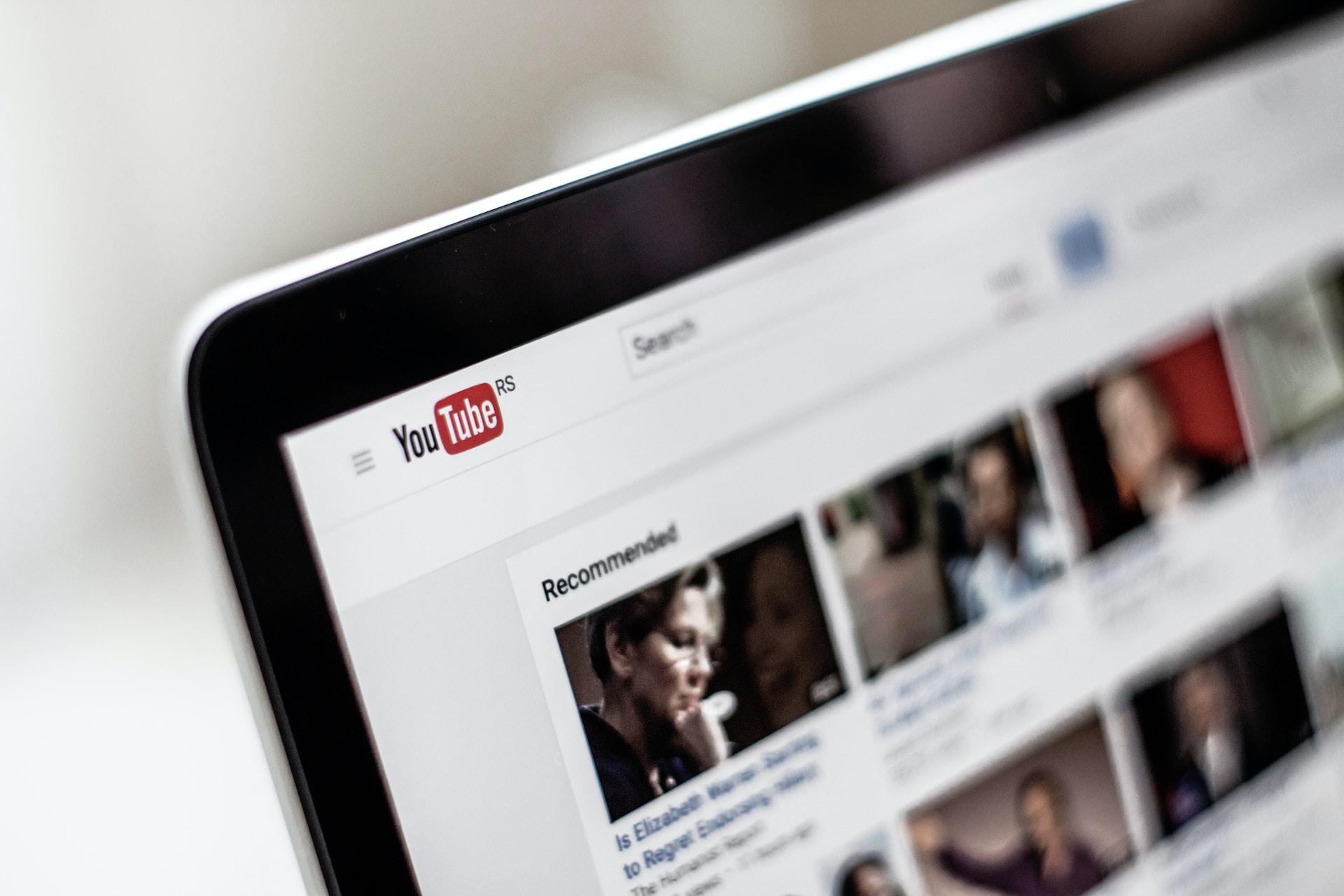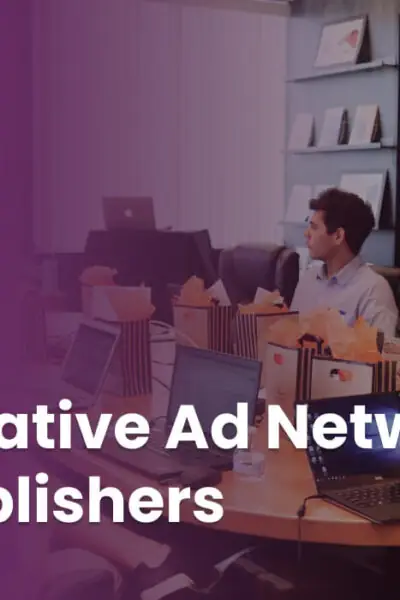Marketers shell out as much as $200,000 for a native ad campaign on a high-tier website – and there’s a reason why sites command such high prices. Learn more about the factors behind native advertising’s recent popularity surge in this detailed guide, but remember to incorporate all your ad efforts in the context of building a natural relationship with your audience.
What is Native Advertising?
Native advertising is a user-friendly marketing technique that helps you promote goods and services in a subtle manner. Basically, it’s advertising that doesn’t look or sound like advertising. It’s unobtrusive and engaging, and readers generally don’t mind seeing it.
Picture this: You’re at a party, and you notice your friend is rocking an amazing new lip gloss. You make a mental note to ask her about the brand but get busy mingling with other guests. As you reach for another appetizer, your friend appears and asks, “Have you tried this lip gloss yet? It’s called Flamingo Mingle, and I just love it.”
You agree that it’s a beautiful hue of pink, and she tells you where to buy it. After that, the two of you change the subject. Your friend doesn’t pressure you to buy the lip gloss or ramble on about it for the rest of the evening. She walks away, leaving you exactly where she found you, so you can continue enjoying the party’s delicious food.
This analogy shows the effectiveness of native advertising. Your friend symbolizes native ads, and the party stands for the website you’re viewing. Native ads aren’t pushy, in-your-face promotions for goods and products. They’re trustworthy, natural ads that blend in with a site’s regular content, and they don’t interrupt what you’re doing with aggressive calls for action.
In fact, sometimes native advertising camouflages itself so well that visitors have no clue they’re viewing an advertisement. A recent study performed by Contently found that the majority of readers think native ads are regular articles. Native ads work, despite the fact that 48% of the participants from that same study said they felt deceived after learning articles were actually advertisements.
Types of Native Advertising
There are several types of native advertising, including video ads, contextual ads, social ads and mobile ads. Marketers often experiment with a combination of techniques so that they can figure out which advertising methods appeal to their target demographics.
Video
Native video advertising eliminates the need for annoying popups that cover your screen when you load a page. It’s also an excellent replacement for pre-roll ads. Pre-roll ads are those frustrating commercials that often appear before you can watch a YouTube video or a news clip, preventing you from watching what you actually want to see.
If that seems like a harsh description, keep in mind that numerous people feel the same way. Sharethrough and Nielsen joined forces to conduct one of the first studies on native video advertising and found that native video ads outperformed pre-roll video ads every single time.
The difference between the two ad types was significant. In one campaign, native video ads garnered an impressive 82.1% brand lift versus a meager 2% from pre-roll ads.
So why do native video ads work so well? Readers like them because:
They’re click-to-play videos rather than obtrusive popups or pre-rolls
Native videos are a choice, not an interruption
They generally offer non-spammy, interesting information about a brand
Sometimes they seem like personal recommendations rather than advertisements
But what about readers who can’t watch video ads because they’re at work, attending an appointment or caring for a napping newborn? Contextual, social and mobile ads are other options for marketers interested in native advertising.
Contextual
You’ve probably seen contextual ads before. You can remember their role by thinking about how “contextual” and “content” sound similar. Contextual ads match the topic of a site’s content, creating a relevant marketing experience for visitors. They’re highly targeted ads that deliver information to readers who can benefit from it.
Let’s say you sell bakeware and cookware. If you place contextual ads, they might appear on sites with cooking tips, recipes or general kitchen how-to articles because these are things that probably interest a large number of your intended consumers. Your ads wouldn’t work contextually on sites for automobiles, power tools or concert tickets because these are not generally going to draw the people that want to buy cookware – at least not while they’re looking at automotive equipment.
If you use Gmail for your emails, you may have noticed contextual ads above your messages. Google isn’t reading your mind; the ads are based on topics from recent messages you’ve sent and received.
Social
Social native advertising refers to ads mixed in with traditional social media posts. You may see sponsored videos in your Facebook feed, advertisers’ Pins on Pinterest or promotional Tweets on Twitter. Companies typically use social native ads to create brand awareness rather than to sell a particular product, but you can certainly accomplish both of these things.
If you aren’t active on social media or don’t recall seeing any recent ads, we’ll give you an example. Pretend you’re logged into Facebook, scrolling through your newsfeed. You receive notifications that multiple friends “like” your recent status update about enrolling in college. You continue scrolling through your news feed and see a video for college loans sandwiched between your BFF’s cat pics and updates about your coworkers’ family vacation. The video is a paid advertisement and a form of social native advertising.
Mobile
If you’ve read some of our other guides, you may remember that mobile ads are crucial to the success of a digital marketing campaign. With that in mind, it’s probably not surprising that marketers are on track to allocate 63% of their mobile marketing budgets toward mobile native advertising by 2020. In case you’re curious, that’s a combined total of approximately $53 billion.
A large portion of mobile native advertising is expected to occur in mobile apps rather than social media sites. That means that when you’re busy crushing candy or dodging bad guys, you might have native ads seamlessly integrated into your game. Many mobile apps already utilize native advertising, so odds are high that you’ve already encountered this ad type during a recent smartphone session.
Consider experimenting with different types of native advertising on a publisher’s platform. Some viewers prefer video ads, while others like text ads. Combining multiple ad types helps ensure that you connect with a large portion of your target demographic.
Native marketing examples
Buzzfeed, a popular website known for producing viral content, has mastered the native advertising scene. Readers often question how the site makes money without any banners or popups, which is amusing if you consider that Buzzfeed earns millions from advertising each year. The site relies on native advertising to generate revenue, and although earnings dipped lower than expected in 2016, the site is still thriving financially.
Gawker and The Onion also use native ads on their sites. As mentioned previously in our guide, you can find plenty of native ads on Facebook, Pinterest, and Twitter.
Hearst, which publishes popular magazines such as Cosmopolitan, Seventeen, and Redbook, is no stranger to native advertising. The company uses native advertising in digital publications, print magazines, and social media sites. If you flip through one of Hearst’s magazines, you may notice multipage ads disguised as articles detailing medical issues or dating advice. The magazines also have numerous native ads for diet pills or weight loss supplements. However, Hearst tries not to cross the line and upset readers with these ads; the company constantly reevaluates its advertising practices to make sure that they’re acceptable for readers – a good practice for any digital publisher.
Have you seen the Refinery29 ad for Puma products? It’s brilliant, and it’s one of the best native ads we’ve seen lately. Here’s what’s great about the ad:
- It follows FTC guidelines by announcing the partnership right away
- It promotes the program without being spammy
- The text is coherent and engaging
- Clear, vibrant photos help readers envision themselves getting in shape
- We also enjoyed YouTube’s Awesome Stuff Week, and The Webby Awards agreed that it was an awesome example of native advertising. In the ads, celebs raved about everything from sneakers to drones, and approximately 10 million people tuned in for the two-week campaign.
Native Advertising Platforms
If you want to replicate the success stories listed above, you don’t have to do it on your own. We’ve got the scoop on reputable native advertising platforms that work with people just like you, whether you’re a small business owner or the advertising exec for a large corporation.
Outbrain
You may not have heard of Outbrain, but you’ve probably heard of the websites that use this native advertising platform. Outbrain reaches a global audience of 557 million each month, and it creates ads for 80% of the world’s leading brands. Pretty impressive.
The company works with marketers in 55 different countries, so the platform isn’t limited to users from the United States or Canada. It offers daily budgets, monthly budgets, and project budgets, making it simple to create a marketing campaign that you can afford.
Adtile
Adtile specializes in mobile ads, making it an ideal option for anyone who wants to conquer mobile native advertising. The company prides itself on helping you develop connections with your audience, which is great if you plan to build a long-term relationship with your target demographic.
Marketers dig the fact that Adtile knows how to incorporate motion ad technology into ad campaigns. Motion ad technology refers to the ads that encourage readers to shake, tilt or rotate their phones. These ads are fun and help keep viewers entertained and interested during the marketing process.
Sharethrough
If you own a magazine or mobile app, Sharethrough might be the right platform for you. The company works with big-name publishers like People Magazine and Forbes, and the Top 50 AdAge Megabrands all work with Sharethrough.
People with scientific minds enjoy the approach Sharethrough takes. The company explains that native advertising works because it engages the entire brain, stating that native ad headlines capture more than 300 times the viewer attention dedicated to other ads.
You can work with Sharethrough as a publisher or an advertiser. Contact Sharethrough directly if you’re interested in partnering with the platform.
Content from our partners
Zemanta
Zemanta specializes in programmatic-native advertising. The company uses an innovative algorithm to help you achieve your marketing goals. Kraft, Microsoft, General Mills and Walgreens are just a few of the big names that trust Zemanta with their marketing goals.
The company uses original content on multiple platforms. You can track advertising results in detailed reports that explain what works and what doesn’t. There are 25 different platforms available, so you can figure out where your target demographic hangs out if you don’t already know.
TripleLift
Marketers appreciate TripleLift’s special Computer Vision tool. This practical tool analyzes images carefully to ensure that your graphics are crisp and well-formatted on any device. Brands who create mobile, desktop and social media campaigns typically partner with TripleLife for this reason.
If your ads rely heavily on graphics rather than catchy text, TripleLift is probably your best bet. They work hard to deliver stunning graphics during every native advertising campaign, and many big retailers work with the company.
Taboola
Taboola wasn’t always a native advertising platform. The company used to focus on promoting videos at the bottom of posts, but now it helps marketers monetize a variety of campaign types. You can find Taboola’s content on sites like Yahoo! and NBC.
This native advertising platform keeps up with marketing trends, which is why it acquired ConvertMedia in 2016. ConvertMedia focused on different techniques than Taboola to achieve similar goals, so now the companies can work together to dominate the native advertising scene.
Taboola has established a trustworthy reputation in the digital marketing world. More than 1 billion unique visitors view the company’s ads each month, and the company has offices located around the world.
Remember, you aren’t limited to a single platform when it comes to native advertising. It’s not uncommon to work with multiple agencies until you find a perfect fit. You may find that one agency creates excellent mobile ads, while another one rocks your socks off with its amazing approach toward social native advertising. If you’re unsure if you want to work with a specific platform, request a demo or ask to view the company’s portfolio. This may help you decide if you can work well together.
Native advertising lets you connect with readers on a personal level instead of bombarding them with unwanted information. Strengthen your bond with your audience by utilizing a subtle approach when you promote products, services or ideas.












